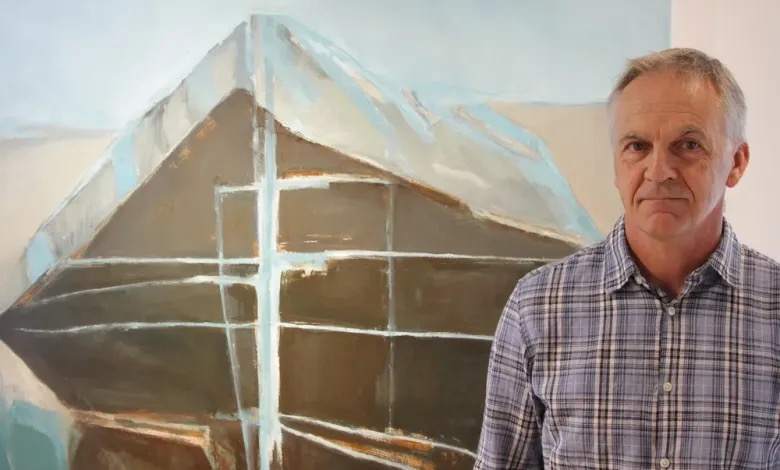
Paddy Lamb is an Irish-born Canadian artist whose ancestry includes Ulster-Scots, Quaker, Huguenot, Celtic, and Proto-Indo-European roots. Born in the city of Armagh, Northern Ireland, he studied Modern History at Trinity College Dublin, followed by postgraduate studies in Physical Education, History, and Fine Arts at the University of Alberta.
A long-time resident of Strathcona County, Lamb has maintained an active studio practice in Edmonton for over 25 years. His work—rooted in drawing, painting, and installation—explores the intersection of physical and social landscapes. Deeply influenced by history, memory, and cultural inheritance, his practice offers a personal narrative on migration, displacement, and human attachment to land.
Lamb is the recipient of numerous awards and scholarships. He was awarded fellowships and residencies at the Ballinglen Arts Foundation in County Mayo, Ireland (2009, 2011), as well as residencies at the Thomas Gushul Studio (Blairmore, Alberta), the Ortona Armoury (Edmonton), 2 Rooms Contemporary Art Projects (Newfoundland), and Empire of Dirt (Creston, British Columbia). From 2019 to 2023, Lamb served as National President and Spokesperson for CARFAC, Canada’s national association for visual artists. In recognition of his contributions to the arts, he was awarded the Queen Elizabeth II Platinum Jubilee Medal in 2023.
Statement
My painting is grounded in a lifelong interest in history, memory, and culture—forces that have deeply shaped my understanding of landscape. While contemporary society often prefers simplified or traditional definitions of these concepts, such notions feel increasingly inadequate—both in life and in the act of painting. This has strengthened my conviction that a piece of rusted machinery, an abandoned building, a weathered bone, or the remnants of an encounter can often speak more truthfully about the past —precisely because they are untouched by our present-day narratives.
Our perception is also shaped by the environments we inhabit, by the marks left through human activity, and by the inevitable distortion of memory over time. In this way, images evolve into personal symbols, layered with subjective meaning.
My work exists within the realm of pictorial abstraction, where collected shapes and references become compositional elements. I often begin with a specific drawing or image, but the challenge lies in diminishing its literal presence while retaining its essence within the painting.
The inclusion of lines and borders acknowledges their dual nature—both necessary and problematic. The improbable content of my imagery serves to highlight how nature resists control and endures well beyond human intervention. Painting, for me, is also a form of introspection—a way to continually redefine my own sense of place.
The narrative that emerges is rooted in landscape and our historical relationship with the land. While the past is inescapable, I don’t believe it demands immediate explanation. Instead, my aim is to cultivate uncertainty—inviting viewers to move beyond familiar definitions and engage with the work on a more intuitive, personal level.
